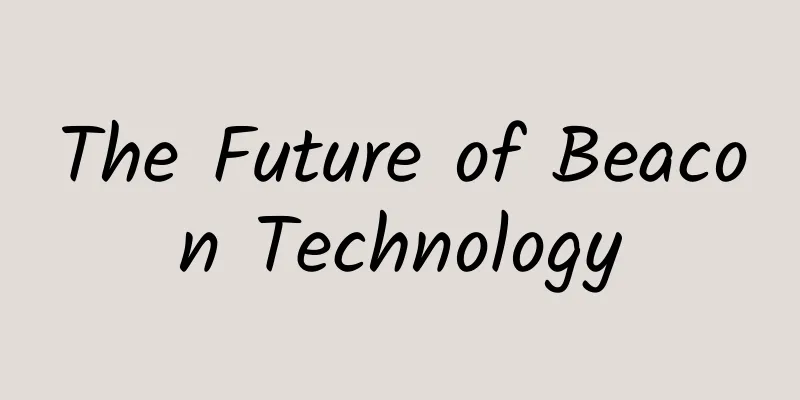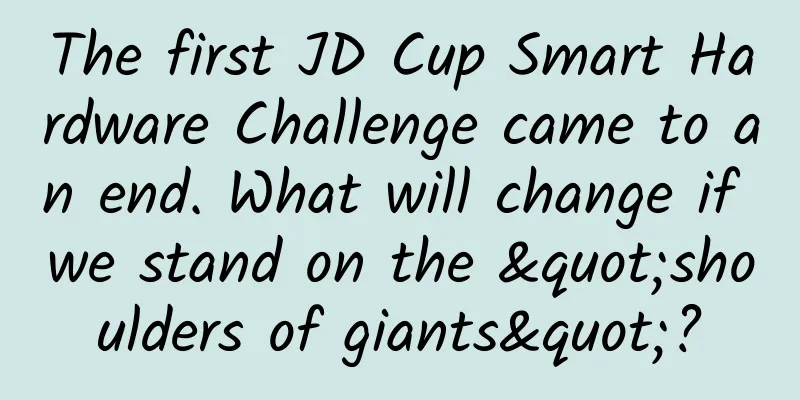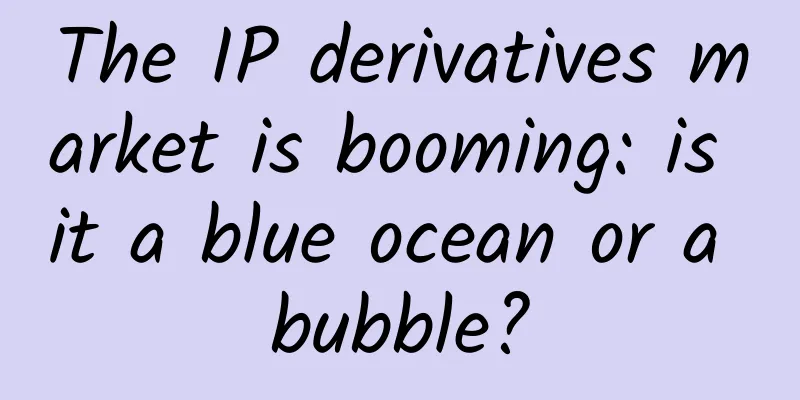The Future of Beacon Technology

|
The future of mobile and web applications and beacon technology It has been almost two years since Apple introduced iBeacon, its unique Beacon format, which has launched a revolution in contextual computing. It is also the first time in computer history that consumer electronic devices such as the iPhone can achieve large-scale distributed deployment and perceive the location information broadcast by tiny wireless devices powered only by batteries. The most important innovation is to eliminate all the inconveniences in the user interaction process. Before the emergence of iBeacon, you might use QR codes to send messages between mobile phones, but this method is very inconvenient: imagine that you take out your mobile phone, open the QR code scanning application, point the camera at the QR code... and so on. But with Beacon technology, the user only needs to enter its recognition range, and a pre-set program logic will be automatically triggered and appear on his (her) mobile phone screen - very convenient, isn't it? Apple has made this technology elegant, simple, and privacy-focused. They expect that there may be billions of devices by then, so when designing the iBeacon protocol format, they used 20 bytes to store a static identifier (UUID + Major + Minor) - this is enough to identify all devices on the planet. When a phone finds and identifies a Beacon device, it triggers the action in the preset application that corresponds to the Beacon device in advance. This is the best part of what we call elegant design: the preset application must search for specific Beacon devices (which also means that this technology is a preset technology). Apple knows that a powerful and convenient user experience may put users at risk of being harassed by spam and being tracked without knowing it. That's why it is necessary to let users clearly choose to download applications from their favorite stores or brands. By doing so, users can allow application developers to push reminders to their phones or use location services. When a user feels that an app should not use their location information or does not provide much value, he or she can uninstall the app. This is why app developers should focus on providing users with more valuable things. Imagine that when a person takes a train and arrives at the destination, the ticket payment information automatically pops up and guides him (her) to complete the payment. What a fantastic experience it is. Or a passenger who is about to take a plane to a certain place, after arriving at the airport, the mobile phone application automatically plans the route to exchange for the boarding pass, and automatically completes the ticket inspection operation when approaching the boarding gate. What a wonderful and convenient user experience! However, it is one thing to broadcast a static identifier and trigger a pre-defined action, and it is another to interact with the user through dynamic program content. When a user walks into a furniture showroom and comes to her favorite sofa, she can view the product's picture, description and price on her mobile phone. However, this data may change over time. In order to maintain this data, one way for developers is to recompile the new data into the app and then release the new version to the app store, or another simple way is for the user's mobile phone to obtain new data by connecting to the merchant's CMS system by sending a Beacon identifier, and this new data is maintained in real time by the merchant in the background of the CMS system. Google's Eddystone and the Mobile Web The question is, how do we interact with so many brands, so many airports, so many retail stores? Do we download all their apps? Of course not. Google recently launched a different Beacon protocol format - "Eddystone". Unlike iBeacon, it not only broadcasts an identifier, but also broadcasts a preset web address. Therefore, instead of so many various applications carrying their own contextual message data, we may only need one application, or even as simple as a web browser. This may indicate that the promise of using one application to communicate with multiple Beacon devices is about to be realized. EddystoneSimilar changes occurred as early as the 1990s. At that time, there were many independent applications using different data formats to interact with the server. For example, FTP protocol and FTP client, IRC instant chat protocol and its client, newsgroups, file retrieval, mail, etc. Over time, most of the above services have been transformed into web forms and handled by Internet browsers. In this way, they can run on any computer, processor architecture, and screen. For developers, designing, coding, publishing and updating web applications will become faster and cheaper than developing other programs. Higher network bandwidth and more advanced browsers make it more difficult for users to distinguish between traditional standalone applications such as Outlook and Excel and so-called Web 2.0 applications such as Gmail, Google Maps and Google Docs. This trend is not yet evident in the mobile application field. Most popular applications such as Snapchat, Facebook or games are still running as independent native applications. The reason is performance issues. Native applications have faster running speed, better battery performance, and the ability to directly call underlying devices such as sensors, cameras, memory, etc. However, over time, the fragmentation of mobile devices, platforms, and screen sizes may once again push this change in the direction of web applications, especially as browsers become faster and gain more access to underlying device capabilities. Still Google, for example, the recently released Chrome browser for iOS can natively scan the broadcast addresses emitted by Beacon devices. Web app or native app Installing only one application to communicate with all Beacon devices is an elegant solution to the application deployment problem. However, progressive brands and retailers, with their innovative mobile teams, will continue to invest in their own loyalty or in-store experience apps, knowing that only through a standalone app installed on the consumer’s device can they fully control the data, branding and end-to-end user experience. They also know that the only way to convince users to download these native apps is to provide them with more valuable things. Beacon devices can help do this, eliminating the inconvenience between user interactions and making applications smarter. Interface and UX engineers will help beacons strike a balance between understanding micro-location information and contextual information. Likewise, with additional data such as motion or temperature from sensors, the user interface can be simplified or restored to full mode. Beacon applications can help users focus on the main purpose of the application (behind) and will affect some important indicators, such as interactivity, usability and user stickiness. Equipment deployment phase In the early stage, typical Beacon applications start with experiments and prototypes. Then a proof of concept program is created through a few Beacon development kits. After all this is deployed within the company, it can usually attract the attention of product people and decision makers. Once the budget and mobile application team are in place, the corresponding application development will begin. After a few weeks or months of research and development, Beacon devices are deployed in the product environment. Airports, shopping malls, or large commercial complexes have huge spaces and hundreds of thousands of location data that need to be identified, which may turn Beacon deployment into a nightmare. The staff should simplify the installation and maintenance process to reduce the cost of work. For example, we can easily calculate the workload of a deployment team to complete the installation, configuration, and debugging in one day, and then multiply it by the number of thousands of stores, and we can get a solution of millions of dollars. This is primarily because large commercial deployments are unlikely to involve wires, manual configuration, and floor plans, but small details, such as the lack of an internal adhesive layer, can still affect the entire deployment. Battery and hardware upgrades For the same reason, businesses are unlikely to replace the batteries in beacon devices, as that would cost much more than installing a new one. Because once installed, the power of the Beacon device will be enough to last until it needs to be replaced. The technology iteration cycle in this circle is very fast. Just last year, the Bluetooth Technology Alliance released two upgrades to their low-power Bluetooth standard, as well as the corresponding new hardware requirements for Beacon devices and mobile terminals. Therefore, three years can be said to be the deadline for a Beacon device. However, software and hardware upgrades should not affect the upper-layer applications in the architecture. Leading Beacon equipment companies should not only optimize deployment and implementation costs, but also simplify the system migration process. Based on the above reasons, it is obvious that merchants will not be willing to install and deploy a variety of Beacon devices corresponding to different terminal platforms or applications. We also do not want to see Beacon devices exclusively supported by Microsoft, Google, or Facebook. Of course, this will not happen. Nothing can stop a Beacon device from broadcasting the packets we want it to broadcast. After all, each Beacon device is like a small computer, and these packets can carry whatever data we want. That's why any customer who has purchased an Estimote Beacon device can easily update the device over the air, turning it on or switching between Eddystone and iBeacon packet modes at any time. No new hardware is required. Here at Estimote, no matter what format the Beacon protocol is in the future, we will fully support it. We expect new protocol formats, sensor integration, and security upgrades to beacon technology to develop rapidly. That’s why we recommend our customers to choose a beacon device partner wisely to ensure that the purchased beacons can be updated with firmware frequently and effortlessly. Remote Management An elegant and simple remote management technology including firmware upgrade is not a huge challenge. It can be said that each Beacon device is a small computer that can connect to mobile phones or other Beacon devices to exchange configuration data including firmware information. That’s why at Estimote, we don’t need additional equipment to configure or upgrade our Beacon devices. All Beacon devices can be upgraded wirelessly, and the technology is already pre-installed on the phone. All users have to do is walk to the Beacon devices deployed in different locations, and the application will automatically connect and update the configuration or firmware of these devices in the background. This process only requires the transmission of a few thousand bytes of data, which is hassle-free. 100% security and user privacy-focused - no personal information is collected or transmitted. For the reasons mentioned above from the operational cost point of view, there is no need to install additional hardware to remotely manage Beacon devices. Whenever a Beacon device is installed, the user and its corresponding application should be nearby. After all, if there is no user, what is the point of putting the Beacon device there? Security and threats Remote management is also about security. Many businesses and airports are very sensitive to potential vulnerabilities in Beacon device networks. Imagine the following scenarios: when a traveler exchanges his boarding pass at the airport service counter, he suddenly receives information about cheaper tickets for the same route from other airlines; or when a customer is shopping in a mall, other e-commerce applications detect his (her) specific location and push a bunch of promotional information to him (her), making him (her) feel like walking into an exhibition! This scenario is very likely to happen if other competing applications detect our Beacon network and record their static identifiers. Since Beacon devices are small computers, we can let them analyze these identifiers dynamically so that only authenticated applications can decode and match them. This is what we implement as "Secure User Identification Mode". Our customers who want to protect their Beacon network can simply turn on this "Secure User Identification Mode" and other competing applications cannot easily obtain location information. Of course, all computer technology can be hacked. Even if that were to happen, the threat is still low. That's because we have an extra layer of security: Apple's App Store certification process! Its App Store will never allow apps that cross the line to access information and data. At this stage, Apple's App Store is the main channel for app distribution, so respectable app creators will not risk dealing with Apple in this regard. Infrastructure sharing and innovation acceleration Once the network of Beacon devices is built and consolidated, there may be an opportunity to share it with other application creators. That's why we have built a set of features called "Beacon Infrastructure Sharing" on our cloud and devices. Our customers can run any application to enjoy the convenience of our infrastructure network and build their contextual messages in the venue. It can be found that retailers open the Beacon infrastructure network to different brand merchants, so that their applications can trigger prompt messages when consumers browse the corresponding store environment. The same situation is also possible at the airport, where such an infrastructure network can be shared with different terminals or channels of different airlines, or duty-free applications. We should expect that in the future, those locations that are attractive and can provide value to consumers will be sold to their Beacon infrastructure network. The same model can be seen in the popular websites and advertisements on the Internet today. If someone creates a high-traffic website, he can sell a part of the website to place advertising titles, caches, or widgets, provided that it does not affect the normal browsing of users, otherwise, he will quickly lose everything. Along with the previously mentioned security components and infrastructure sharing capabilities, any Beacon device network owner can invite third-party applications to join and provide them with a promotional campaign for a specific period of time. Just as agencies and website owners use visible activities on their websites, there should be something similar in the real physical world to carry the promotion and interactive activities we need. And this thing has actually been created, it is called "flat guide map". It has been used for many years by retail, airports, museums and their suppliers. Beacon-based indoor positioning Being able to quickly deploy hundreds of Beacon devices and immediately see them on the floor plan has always been Estimote's long-term goal. Based on our extensive research investment in indoor positioning technology under Beacon technology, we are getting closer and closer to the above goal. We built an amazing data science team and created a powerful indoor positioning algorithm and SDK that anyone can build into their application to accurately locate people and mobile devices, even if they are only a few meters apart in a building. To make this easier, we invented an automatic measurement tool. Even if the deployers don't have a floor plan, they can download our app from the Apple App Store and automatically measure the location information of the space. All they need to do is walk around the space to be measured. Then, the coordinate data of the space and the location information of the Beacon device are saved to the cloud, where they can modify, manage, or share this data with third-party applications. We also have an analytics component that venue owners can use to better understand the behavior of users in the venue. At the same time, the REST-style API makes integration or deep embedding easier. Privacy issues have been addressed through pre-set mechanisms, as explained before. However, if users have strong demands for features such as route search and asset tracking, they can go to the app store to download and install apps with indoor positioning features, and after explicitly agreeing to be positioned, their needs can be met. It’s one thing to know people’s exact location and complete contextual information interaction, but it’s another to have a deeper insight into the user’s interaction with the things around him. Combining these two aspects can help designers create amazing mobile applications and user experiences. This is why we at Estimote are also working hard on the research of sensors built into Beacon devices, and named them “nearables”. Using stickers to attach tiny beacon devices to target objects, users can turn ordinary objects into smart products and connect them. These objects can not only broadcast their presence on the network, but also broadcast additional data such as temperature, movement, direction, and state duration. All of this will become possible based on our own "Connectionless Nearable Packet" technology, which we announced last year before Google started working on Eddystone. Applications for real physical time Beacon device infrastructure sub-items, ease of use, precise indoor positioning, Nearable, combine these concepts, you can quickly understand where the future trend is. Ultimately, all these components will make it possible to build a virtual application that corresponds to the real physical world. This will be a huge shift from designing a mobile phone application to designing a virtual airport, commercial building, or museum. For example, an application developed by Estimote for a museum will be abstracted to be compatible with any subsequent museum; an application developed for a commercial entity must also be able to be extended to thousands of commercial entities. This is the long-term goal behind Beacon technology. Make the development, configuration, and deployment of virtual applications in real physical locations easier. At Estimote, we have been executing on this vision since the day we launched this project. We are in communication with many leaders in the industry and we are grateful for their help, which makes our technology better every day. We are very excited that all the major players, including big companies like Apple and Google, are with us. We are looking forward to the future development and how contextual information technology will evolve. The most exciting thing is the fact that these are still in the early stages of development, with many innovations and inventions pioneered. |
>>: Why Google is eating itself
Recommend
In 2020, where will the wind of short video content marketing blow?
2019 is a year of "connecting the past and t...
Another gay web drama has become popular, and the driving force behind it is actually a lesbian social APP!
Two dramas are very popular recently. One is call...
3000 words to understand Weibo operation and promotion routines!
Why do I operate Weibo? Because browsing Weibo is...
Are there any restrictions on URLs for Baidu Frame users?
I believe everyone knows that as long as you have...
What is the timetable for the 2022 Beijing College Entrance Examination? What month and date is the exam?
The 2022 Beijing College Entrance Examination wil...
Why was the earthquake in Hualien, Taiwan Province felt strongly in Jiangsu, Zhejiang and Shanghai?
According to the official measurement of the Chin...
In-depth analysis of information flow delivery, the key method to rapidly increase ROI
What exactly is advertising, trying to convince y...
How much does it cost to develop a mini program for Zhenjiang Mall? Zhenjiang Mall Mini Program Development Price Inquiry
There are two types of WeChat applet development ...
Lead pollution in the Roman Empire lowered IQ across Europe; the best time of day to drink coffee | Technology Weekly
Compiled by Zhou Shuyi and Pingsheng Lead polluti...
62 films directed by Tsui Hark (1979-2018) HD collection Baidu Cloud download
62 films directed by Tsui Hark (1979-2018) HD col...
How to make an activity plan? Just read this one
Physical stores on the market can be divided into...
The six easiest programming languages to learn for beginners
【51CTO.com Quick Translation】Learning programming...
This may be Apple's first service to enter Android
As one of the largest acquisitions in Apple's...
Wi-Fi 6 router purchasing guide: If you don’t have demand, you can really wait for products in the thousand-yuan range
Although the Wi-Fi Alliance launched the Wi-Fi 6 ...
iPhone 6: Apple's problems over the years
The iPhone 6 has not been on the market for long,...









